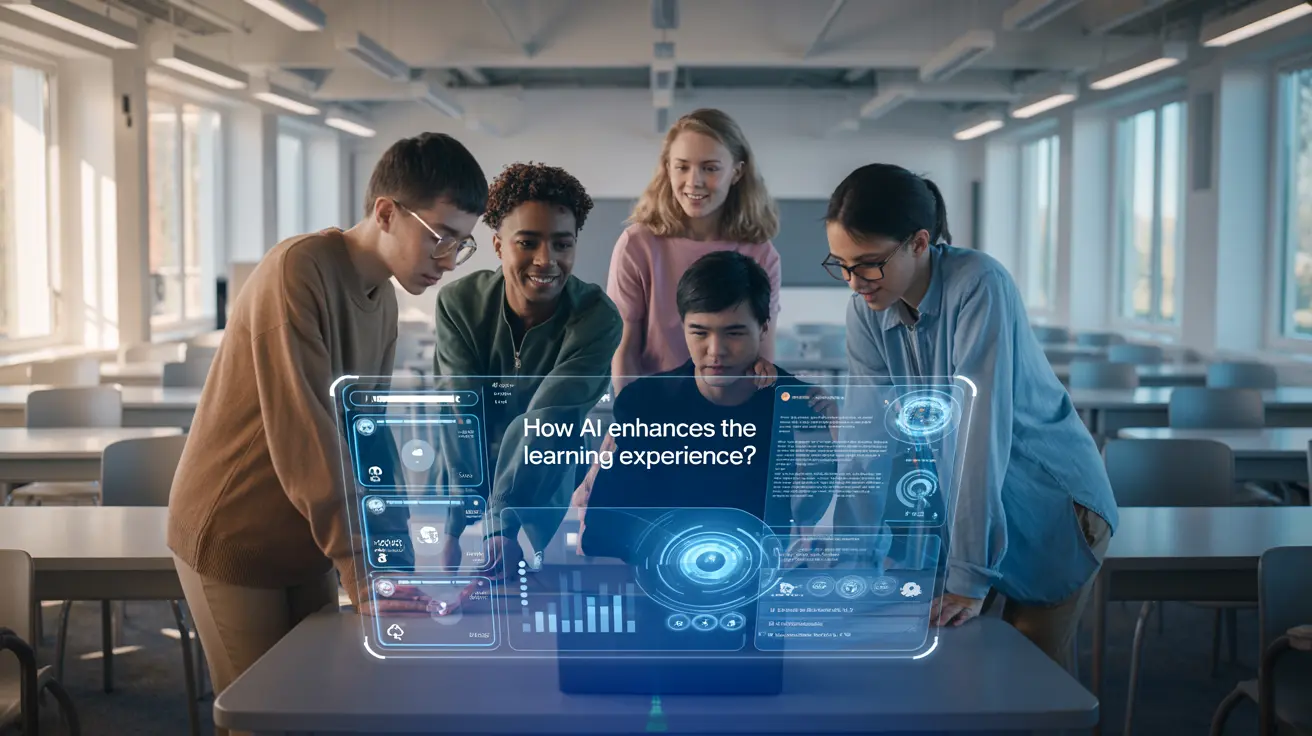Home / Blog / How AI-Powered Learning Platforms Are Transforming Education?
Artificial Intelligence is not just disrupting industries it’s reinventing how we learn. From personalized study paths to predictive analytics, AI-powered learning platforms are shaping the future of education for students, teachers, and institutions.
15 Sep, 2025

In the last decade, education has shifted more than in the previous century. Classrooms once filled with chalkboards and paper textbooks are now powered by tablets, online platforms, and digital collaboration tools. But the real revolution? Artificial Intelligence (AI).
Today, AI-powered learning platforms are not just supporting teachers they are redefining how students learn, how educators teach, and how institutions operate. Personalized study paths, real-time feedback, and predictive insights are replacing the “one-size-fits-all” education model.
According to HolonIQ, the global edtech market is projected to reach $404 billion by 2025, and AI-driven solutions are expected to fuel much of this growth. At 10turtle, we’ve observed firsthand how businesses and institutions adopting AI-powered learning see improved outcomes, higher engagement, and measurable ROI.
So how exactly are AI-powered learning platforms transforming education and what does the future hold? Let’s dive in.
For decades, education relied on standardized teaching. One teacher, one textbook, and one curriculum for hundreds of students. While effective for mass education, it left many students behind some bored because lessons were too easy, others lost because lessons were too fast.
AI flips the model. Platforms like Khan Academy’s AI tutor, Byju’s adaptive learning system, and Duolingo’s AI-driven lessons create custom learning journeys. Instead of teaching everyone the same material, these platforms:
Case in Point: Duolingo uses AI to predict when a learner is about to forget a word and delivers a practice prompt just in time. This “spaced repetition” approach dramatically improves retention.

AI platforms collect vast amounts of student interaction data quiz scores, time spent, problem areas and use it to craft personalized study plans.
At 10turtle, we help institutions design AI-driven learning solutions that adapt not only to performance but also to learning style visual, auditory, or experiential.
Explore AI Services
Teachers spend hours grading assignments. AI reduces this burden.
This allows educators to focus less on repetitive tasks and more on mentorship and creativity.
AI is bridging educational gaps:
A UNESCO report found that AI can help 40% more students access quality education by reducing language and disability barriers.
For schools and universities, AI provides predictive insights:
At 10turtle, we’ve seen how integrating AI-driven analytics dashboards into education platforms gives institutions clarity that manual data collection never could.
Students: Empowered and Engaged
Students benefit from interactive, personalized, and gamified learning experiences. Platforms like Duolingo and Quizlet AI keep learners motivated with real-time progress tracking.
Teachers: From Instructors to Mentors
With AI handling administrative work, teachers evolve into mentors, facilitators, and innovators. AI doesn’t replace teachers it augments them.
Parents: Better Visibility into Progress
AI platforms give parents dashboards and alerts on their child’s performance, providing transparency that traditional report cards lack.
Policymakers & Institutions: Data-Backed Decision-Making
Governments and universities can use AI to analyze large-scale educational trends and design policies that reduce inequality and improve efficiency.
Short-Term (1–3 years)
Mid-Term (3–5 years)
Long-Term (5–10 years)
While powerful, AI in education raises challenges:
Responsible AI development is critical. At 10turtle, we emphasize ethical AI solutions that prioritize privacy, inclusivity, and fairness.
AI-powered learning platforms aren’t a future concept they’re here, reshaping how we learn and teach. From personalized lessons to institution-wide insights, AI is creating an education system that’s smarter, more inclusive, and more effective.
The next decade will define how well schools, universities, and governments adopt this change. Those who embrace AI will empower their learners to thrive in a world where adaptability is key.
At 10turtle, we help businesses and institutions design AI-driven learning and development platforms that unlock growth, efficiency, and innovation.
What’s your take? Do you see AI as a partner or a disruptor in education?
1. How does AI personalize education?
AI collects performance data and adapts lessons based on student strengths,
weaknesses, and learning pace, ensuring individualized growth.
2. Can AI replace teachers?
No. AI supports teachers by handling repetitive tasks like grading and
analytics, allowing educators to focus on mentorship.
3. What are examples of AI in education today?
Duolingo’s adaptive learning, Byju’s personalized lessons, Coursera’s AI
tutors, and Gradescope’s automated grading are key examples.
4. How secure is student data in AI systems?
Data security depends on platform design. Reputable systems follow strict
privacy regulations like GDPR.
5. Will AI education platforms widen or close
inequality gaps?
If implemented responsibly, AI can close gaps by providing low-cost, accessible
learning tools. However, infrastructure access remains a challenge.
6. What’s the future of AI in classrooms?
Expect AI tutors, AR/VR immersive experiences, and fully adaptive curricula
within the next decade.